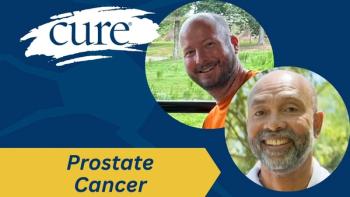
Spotlighting Disparities in Multiple Myeloma
As a part of its “Speaking Out” video series, on behalf of the International Myeloma Foundation, CURE® spoke with their chief medical officer, Dr. Joseph Mikhael about disparities in the multiple myeloma space.
Colleen Moretti: What current disparities are present in the multiple myeloma space?
Dr. Joseph Mikhael: We talk a lot about health disparities in general right now, which I'm very thankful that the community has been more open to discussing this because they've always been present, but at least they're more in the spotlight now. I would argue that unfortunately in myeloma, we may see the greatest disparity of all cancers between the African American population and the White population. What I mean by that is, myeloma is twice as common in the African American population — and yet, unfortunately, even though we've had great improvements in survival in myeloma, we've only seen approximately half of that benefits seen within the African American community. What I mean by that is the average African American patient unfortunately lives roughly half as long as a White patient. Now, we don't only see the disparity within the African American population, we see disparities in multiple populations. In the Hispanic and Latinx community for example, myeloma is diagnosed about five or six years younger on average, than the White population. So, there is a different biology here, there are different ways of thinking about the disparity. But the disparity has a lot to do not just with biology, but sadly has a lot to do with access to the testing and access to those key treatments that we know have helped patients with multiple myeloma.
Moretti: How can disparities affect treatment or survival?
Mikhael: What we've learned is that often the disparity is both in the diagnosis and the treatment too. I mean by the diagnosis is that the average myeloma patient, no matter what their background is, sees their family doctor three times for signs and symptoms consistent with myeloma before the myeloma was diagnosed. That's even longer within certain populations, like the African American population, often because of things like diabetes that have a lot of overlapping signs and symptoms of myeloma, and someone may have symptoms in myeloma, and they're just told all that may just be your diabetes until eventually it's clear that it's not just the diabetes. But from the treatment standpoint, this is perhaps the greatest of the disparities and sometimes I summarize it by talking about the four T’s. What I mean by that is we know that there are four things that have significantly improved the survival of myeloma patients, and unfortunately, African American patients and indeed Hispanic and Latinx patients have less access to these four T’s that include triplets or three drug combinations, transplants or autologous stem cell transplant, clinical trials and lastly, this newest therapy will be called CAR-T cell therapy, which is a new way of engaging someone's immune system to attack the myeloma. So we know that unfortunately, that access is a real problem. Interestingly, in the VA system where we studied this, where at least theoretically, everyone is given the same access to therapies, African American patients had a better survival than White patients. So, we know that there is a great opportunity here and even widens that disparity when we know that what that these individuals can actually do better, but unfortunately, because of that delayed diagnosis and the lack of access, that survival is inferior.
Moretti: Is there anything those who are affected by these disparities can do to help?
Mikhael: There are many things that can be done. This is a much greater issue of course, this is a complex problem that requires a complex solution. The basics of systemic racism within the healthcare system, as I mentioned, that delay diagnosis, the treatment, the engagement of government, regulators of industry, of the healthcare team and of the community of our so everyone plays a role in helping solve this problem. Patients themselves, of course, being engaged, being informed being educated. One of the things that we do at the IMF (International Myeloma Foundation) is try to educate the community at large about what those signs and symptoms are, so they can help distinguish them from other diseases that may be mimicking myeloma, and also that we educate the primary care physicians and the primary health care teams so that they can recognize myeloma early. And then when a patient has myeloma, they can engage with an organization like the IMF, so that they can understand their condition and seek the best treatment possible because as I indicated, when individuals are given access, when they are given these treatments, and sometimes there are barriers like insurance and other things that we can try and help overcome, we know that patients can do much better.
Moretti: Are there any resources that the IMF offers to provide support for these patients or address these disparities?
Mikhael: One of my greatest privileges in working at the IMF is to lead our diversity efforts in what we call the M-power program, kind of a play on words to empower patients in their communities to change the course of myeloma, that the current course of myeloma of health disparity is unacceptable. And so, we provide a whole series of resources, people can see it at our at myeloma.org or mpower.myeloma.org website, where we have a whole strategy of engaging the community through medical and non-medical organizations. Whether it's the Black Nurses Association of the National Medical Association, but also fraternities and sororities and churches to raise awareness around myeloma so people can understand that this disease is more common in certain populations. But then also to facilitate their care through centers that can care for them well, that can give access to these therapies that are absolutely necessary. So the IMF is deeply engaged in this. We're sort of in a unique position by partnering with just about everybody in the field to try and help reduce this disparity and I'm optimistic and realistic. I'm optimistic because I know how much effort is going into it. I'm realistic, knowing that we can't fix everything overnight, but we have to be committed to reducing this awful health disparity in myeloma.




